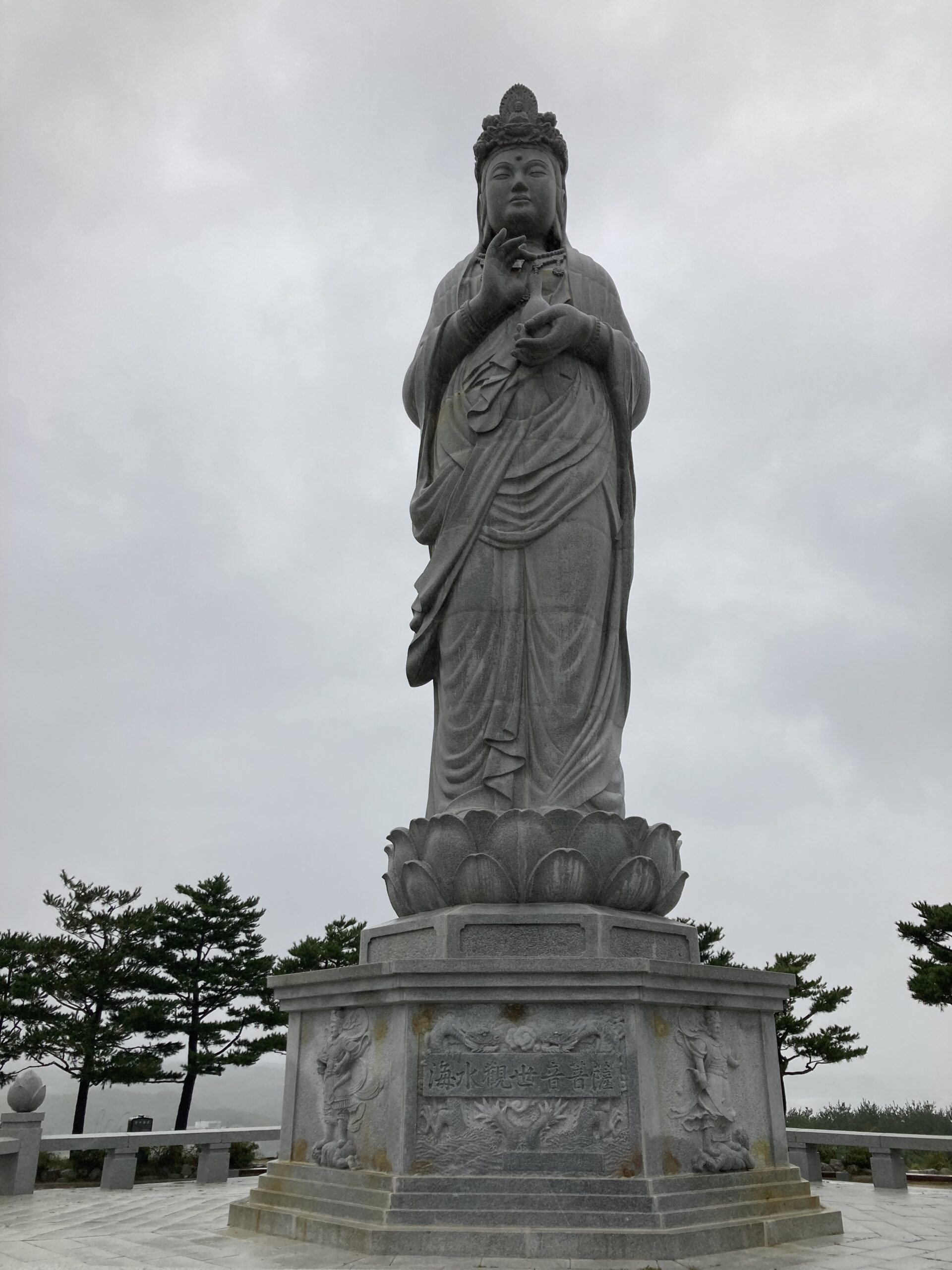
Kwan Seum Bosal statue, Sokcho, Korea
How can Buddhism inform therapy?
One way to answer this question is to look at the symbols of four major characters in the Buddhist cannon: Munsisari Bosal, Byo Hyon Bosal, Kwan Seum Bosal, and Ji Jang Bosal.*
Munsurari Bosal (AKA Manjushiri), the figure of wisdom, holds a sword. I think of this as a flaming sword that cuts through circling thoughts. In therapy and in life it’s easy to get caught in a long chain of associations that may have little to do with the core matter at hand or the feelings we’re experiencing. As a therapist I’m not so violent as to pull out a flaming sword, but I do often try to picture a kind of ‘cutting through’ to try to get the focus back, especially if language is feeling like it’s not serving. It’s worth mentioning here that creative arts may be a great pathway as well when language is not doing the trick.
Byo Hyon Bosal (AKA Samantabraha or Fugen) rides a giant elephant and can represent action in the world. For me, the elephant is about strong intention. An elephant is a graceful animal, as giant as they are, and can symbolize carrying out action in a non-forceful way. You may spend a lot of time in psychotherapy gaining insights into different things and exploring ideas about your life, history, and motivations. How do you bring this into the world and apply it to your life and relationships?
Kwan Seum Bosal (AKA Kannon or Guanyin) is the symbolic manifestation of compassion and gives form to how we are with others. As a therapist, I can’t establish a real connection unless I can put myself into another person’s shoes. Unless I can put aside some of my own nonsense and have compassion and empathy for the other person, there is no real functional foundation. Likewise, having compassion for yourself can be highly transformative. This is a great area to explore.
Ji Jang Bosal travels to the underworld after people die and suffers along with them, and through this he’s able to bring them out of hell or in some way alleviate their duress. This is an idea I turn to in the most difficult times of therapeutic work. Sometimes there are experiences of trauma that are almost unthinkable. To sit with the pain, follow related thoughts even when they don’t make logical sense, and hear and be heard can lead to healing in surprisingly powerful ways.
Each of these figures and practice areas support each other and ultimately point to the same stance, the same moment. Mindfulness brings us back again and again to what is happening now, what we see in front of us, and what we hear without all of the echoing rings of our thinking. Mindfulness can also bring us closer to our feeling state and how the past may be showing up in the present. Overall, reminding ourselves of a different, empathic approach (as exemplified by the above figures) can help with healing in life and in therapy.
If your considering therapy and are interested in a Zen-informed approach please learn more about our practice or contact us here.
This post is adapted from an article written for Primary Point magazine in 2023.
*Korean names are used unless otherwise indicated.

